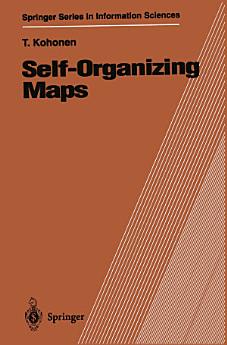Self-Organizing Maps
dic 2012 · Springer Science & Business Media
4.0star
2 opinionesreport
Libro electrónico
362
Páginas
reportLas calificaciones y opiniones no están verificadas. Más información
Acerca de este libro electrónico
The book we have at hand is the fourth monograph I wrote for Springer Verlag. The previous one named "Self-Organization and Associative Mem ory" (Springer Series in Information Sciences, Volume 8) came out in 1984. Since then the self-organizing neural-network algorithms called SOM and LVQ have become very popular, as can be seen from the many works re viewed in Chap. 9. The new results obtained in the past ten years or so have warranted a new monograph. Over these years I have also answered lots of questions; they have influenced the contents of the present book. I hope it would be of some interest and help to the readers if I now first very briefly describe the various phases that led to my present SOM research, and the reasons underlying each new step. I became interested in neural networks around 1960, but could not in terrupt my graduate studies in physics. After I was appointed Professor of Electronics in 1965, it still took some years to organize teaching at the uni versity. In 1968 - 69 I was on leave at the University of Washington, and D. Gabor had just published his convolution-correlation model of autoasso ciative memory. I noticed immediately that there was something not quite right about it: the capacity was very poor and the inherent noise and crosstalk were intolerable. In 1970 I therefore sugge~ted the auto associative correlation matrix memory model, at the same time as J.A. Anderson and K. Nakano.
Calificaciones y opiniones
4.0
2 opiniones
Califica este libro electrónico
Cuéntanos lo que piensas.
Información de lectura
Smartphones y tablets
Instala la app de Google Play Libros para Android y iPad/iPhone. Como se sincroniza de manera automática con tu cuenta, te permite leer en línea o sin conexión en cualquier lugar.
Laptops y computadoras
Para escuchar audiolibros adquiridos en Google Play, usa el navegador web de tu computadora.
Lectores electrónicos y otros dispositivos
Para leer en dispositivos de tinta electrónica, como los lectores de libros electrónicos Kobo, deberás descargar un archivo y transferirlo a tu dispositivo. Sigue las instrucciones detalladas que aparecen en el Centro de ayuda para transferir los archivos a lectores de libros electrónicos compatibles.







